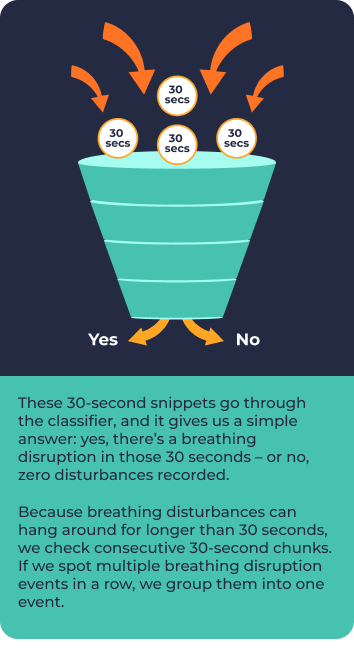Breathing disruption index (BDI)
What does this mean for me?

This is the number of events where you may have stopped breathing or struggled to breathe in the night. It’s often a good indicator of obstructive sleep apnoea (OSA). The colour of the circle indicates how severe your breathing disruptions are:
How do we calculate this?
The BDI algorithm defines a breathing disturbance as a drop in airflow for more than 10 seconds, matched with the sound of breathing. To calculate this, we use the ‘Breathing Disturbance Classifier’ we’ve developed. It works like this: we grab 30-second snippets of audio data, overlapping every 10 seconds. It’s kind of like taking little audio snapshots. We do this to make sure that we don’t miss any data.


Imagine you’ve got a 90-second analysis, split into 3 30-second sections. If we find a disturbance in sections 1 and 2, but not in 3, that counts as one event. Why? Because 1 and 2 are pals, right next to each other.
But if the disturbances pop up in sections 1 and 3, with nothing in 2, that’s two separate events. Why? Because there’s a gap between the disturbances.
The Breathing Disturbance Index is simple. We tally up all the events during recording and divide it by the total time recorded.





